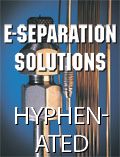A Bigger and Better Pittcon 2010 for LCGC
Most readers of LCGC are no doubt familiar with the debate that has been going on within the field of analytical chemistry concerning the conference industry.
Most readers of LCGC are no doubt familiar with the debate that has been going on within the field of analytical chemistry concerning the conference industry. Are in-person events becoming less popular? Will budget-tightening impact attendance significantly in 2010? And so on. While there is certainly some validity to the theory that in-person meetings in general are not as business-critical as they once were, to get an idea of how the staff of LCGC feels about this debate, one has only to look at the schedule of events we have planned for Pittcon 2010, set to run from February 28 to March 5 in the Orange County Convention Center in Orlando, Florida.
Perhaps the biggest event planned is the LCGC/Spectroscopy Podcast Theater, set to run Monday, March 1 through Wednesday, March 3 at Booth 2805 in the convention center. A lineup of the industry’s most respected and well-known experts will be speaking throughout the first two days of the theater, bringing listeners cutting-edge information on HPLC/UHPLC, GC, GC–MS and LC–MS, and spectroscopic techniques in general. The third day will be dedicated to the launch of LCGC’s new online social networking and training site, CHROMacademy, and will also feature speakers from all corners of the chromatography field. We invite conference-goers to stop by the theater any time during these first three days of Pittcon. Morning sessions will run from 10–12 A.M., while afternoon sessions will run from 2–5 P.M., and free giveaways will be distributed to all who attend. When you add to this the Third Annual LCGC Awards press conference, to be held Monday at 2 P.M. in Room 303ABC, it is clear that LCGC’s slate will be full at this year’s Pittcon.
While the future of the conference industry may be the subject of debate for many, for LCGC, Pittcon 2010 promises to be the biggest and most elaborate in the 28-year history of the publication. For us, there really is no debate: Pittcon 2010 is still the biggest event in the field of separation science. We look forward to seeing you there.
Detecting Hyper-Fast Chromatographic Peaks Using Ion Mobility Spectrometry
May 6th 2025Ion mobility spectrometers can detect trace compounds quickly, though they can face various issues with detecting certain peaks. University of Hannover scientists created a new system for resolving hyper-fast gas chromatography (GC) peaks.
University of Oklahoma and UC Davis Researchers Probe Lipidomic Profiles with RP-LC–HRMS/MS
May 6th 2025A joint study between the University of Oklahoma Health Sciences Center (Oklahoma City, Oklahoma) and the UC Davis West Coast Metabolomics Center (Davis, California) identified differentially regulated lipids in type 2 diabetes (T2D) and obesity through the application of reversed-phase liquid chromatography-accurate mass tandem mass spectrometry (RP-LC-accurate MS/MS).
Automated Sample Preparation (ISO 20122) for MOSH/MOAH in Seasoning Oils
May 6th 2025This work presents an Automated Sample Preparation procedure for MOSH/MOAH analysis of Seasoning Oils. We compare results from a manual epoxidation procedure compliant with DIN 16995 with results based on fully automated sample preparation (epoxidation and saponification) compliant with ISO 20122. In both cases, online clean-up via activated aluminum oxide (AlOx) are used to remove interfering n-alkanes from the MOSH fraction during the HPLC run. Automated data evaluation using a dedicated software (GERSTEL ChroMOH) is presented.

.png&w=3840&q=75)

.png&w=3840&q=75)



.png&w=3840&q=75)



.png&w=3840&q=75)







